It is getting closer to the holidays, and many individuals will be tasked with installing holiday lighting and other electrically operated devices outside their dwelling units. Many folks find it a challenge to find accessible outdoor receptacle outlets for this purpose. Some make the mistake of installing extension cords through windows and doorways to provide electricity for these holiday decorations. This is very dangerous and could result in damage to these extension cords with possible electrocution or fire as a result.
Others will struggle with the tripping of the ground-fault circuit-interrupter (GFCI) that protects receptacle outlets installed in these outdoor locations. In some cases, the tripping may be warranted due to a leakage current from a damaged cord or decoration. In some cases, the culprit could be water entering the receptacle and causing an unintended tripping of the GFCI protection.
It is important to understand the receptacle cover requirements when utilizing a receptacle outdoors. In some cases, a standard flip cover will be all that is required to protect the receptacle. In other cases, an “in-use” or “bubble-cover” will be necessary. But how does the installer know which is required and why it is required. This article discusses these requirements.
Determining A Damp Or Wet Location
The type of cover required will depend on how the location has been classified in regard to a damp or wet location. These are defined terms located in Article 100 (Definitions) of the 2020 edition of the National Electrical Code (NEC). The NEC defines a damp location as one that is protected from weather and not subject to saturation with water or other liquids. This location may also be subject to moderate degrees of moisture. So, this location could be an area under an enclosed porch or maybe a location under the soffit of the building. A damp location can be inside or outside of a structure. This article will concentrate on receptacles located outside the structure.
What about a location that is deemed a wet location? What are the factors that determine this? Better yet, who is responsible for making the determination that a location is a damp or wet location. A wet location is defined as installations underground or in concrete slabs or masonry in direct contact with the earth. Wet locations are also areas subject to saturation with water or other liquids. A few examples would be vehicle washing areas, indoor pet washing areas, and unprotected locations exposed to the weather. For holiday decorations, some of the receptacles will be located in areas exposed to weather and subject to saturation from rain, sleet, or snow.
Who is ultimately responsible for making the determination if an area is a damp or wet location? This responsibility falls on the authority having jurisdiction (AHJ). The term AHJ is also a defined term located in Article 100. This is the individual responsible for enforcing the requirements of a code or standard, or for approving equipment, materials, an installation, or a procedure. In many cases, this is an electrical inspector, building official, fire marshal, electrical engineer of a facility, commanding officer of a military installation, or another person having statutory authority. All of these decisions and determinations are typically achieved and accomplished by the AHJ during the final inspection of a dwelling unit during its initial construction.
The Type Of Cover DOES Make A Difference
Once a determination has been made as to if the location is damp or wet, the NEC requirements can be applied. A good place to start is section 406.9, which covers receptacles in damp or wet locations. This is where you will find information about the type of cover needed for each location.
When the area has been deemed a damp location, the receptacle is required to have an enclosure for the receptacle that is weatherproof when the receptacle is covered. This means when an attachment plug cap is not inserted into the receptacle, the cover is closed. See photos 1a, 1b, 1c, and 1d.
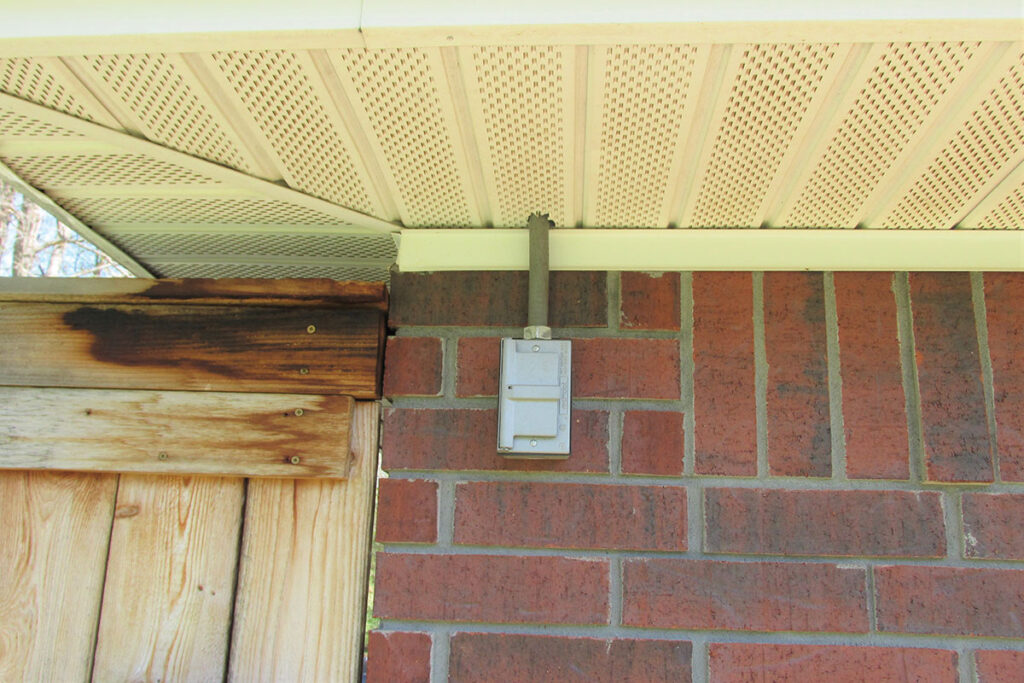
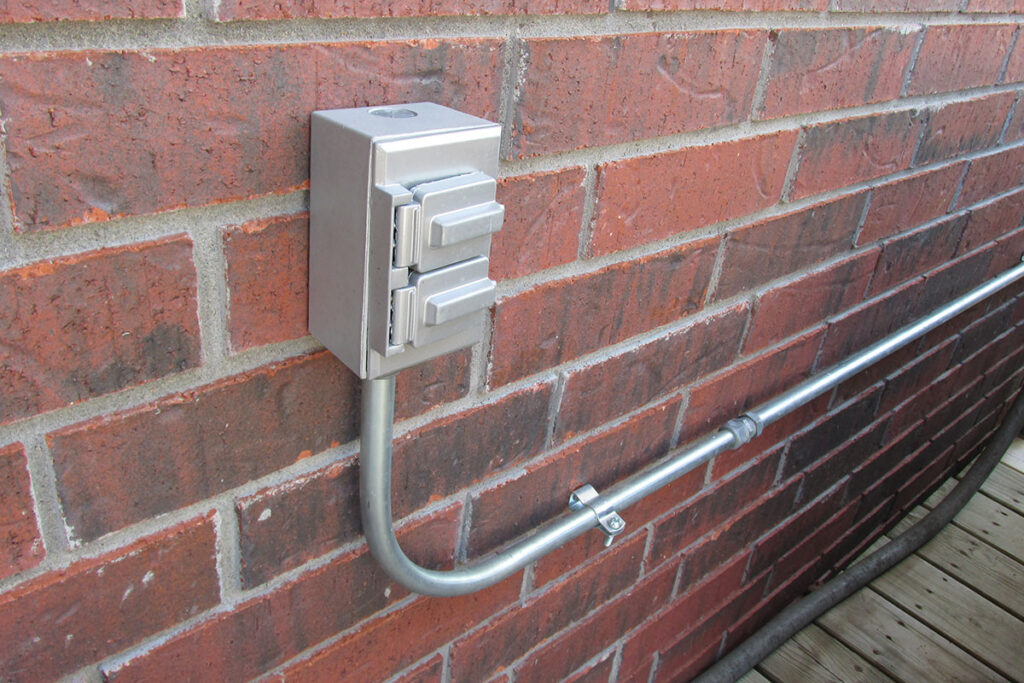
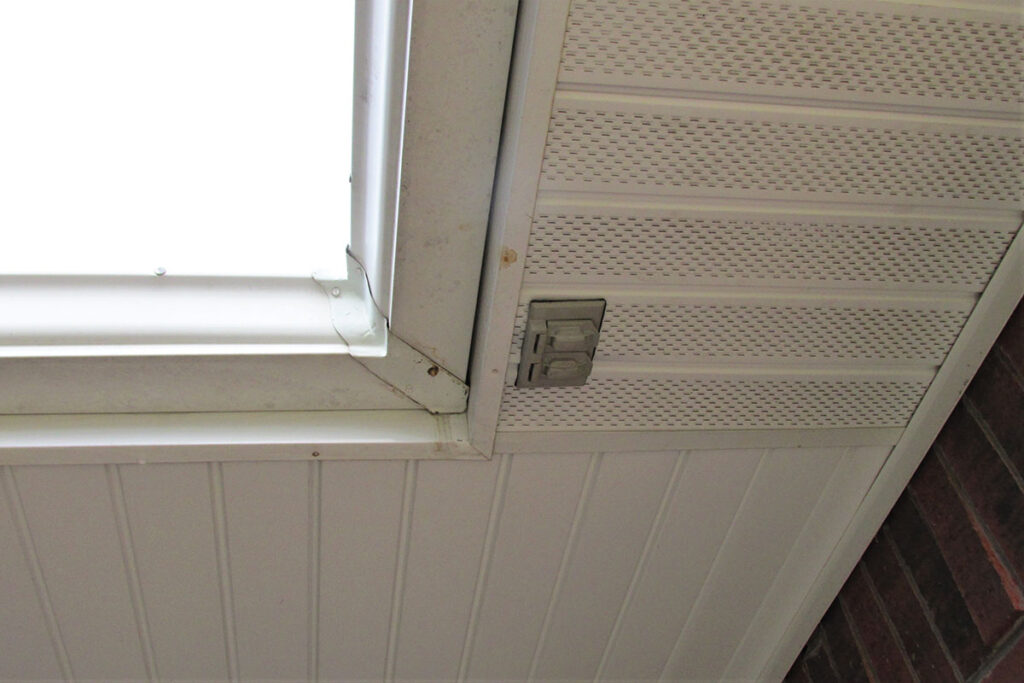
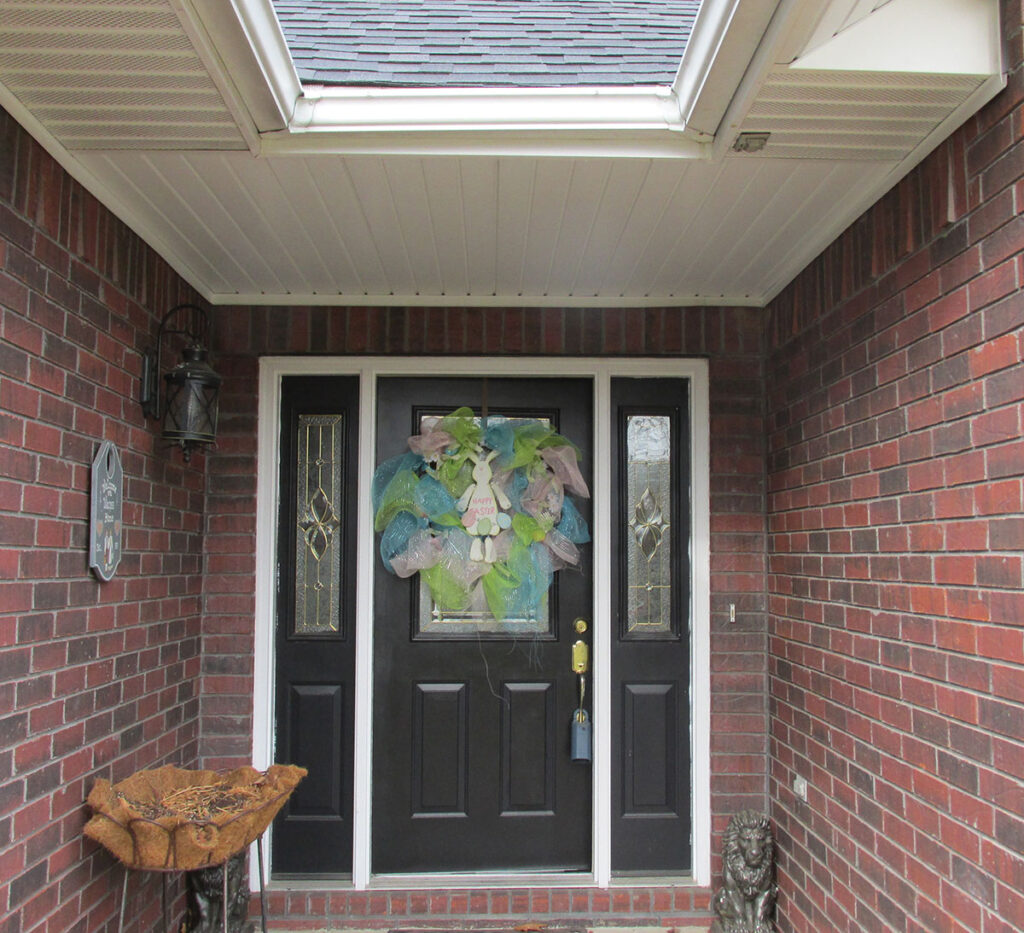
When an area has been deemed a wet location, receptacles are required to have an enclosure that is weatherproof. This requirement is applicable regardless if the cord cap of the cord is inserted into the receptacle or not. See photo 2a, 2b, 2c, and 2d.
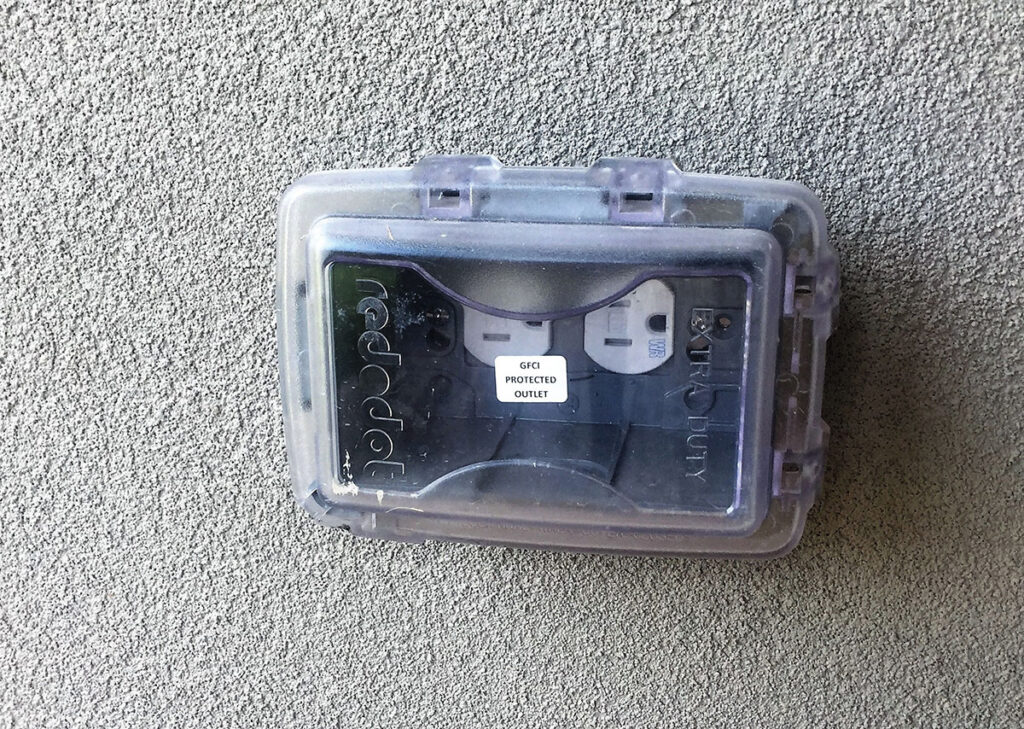
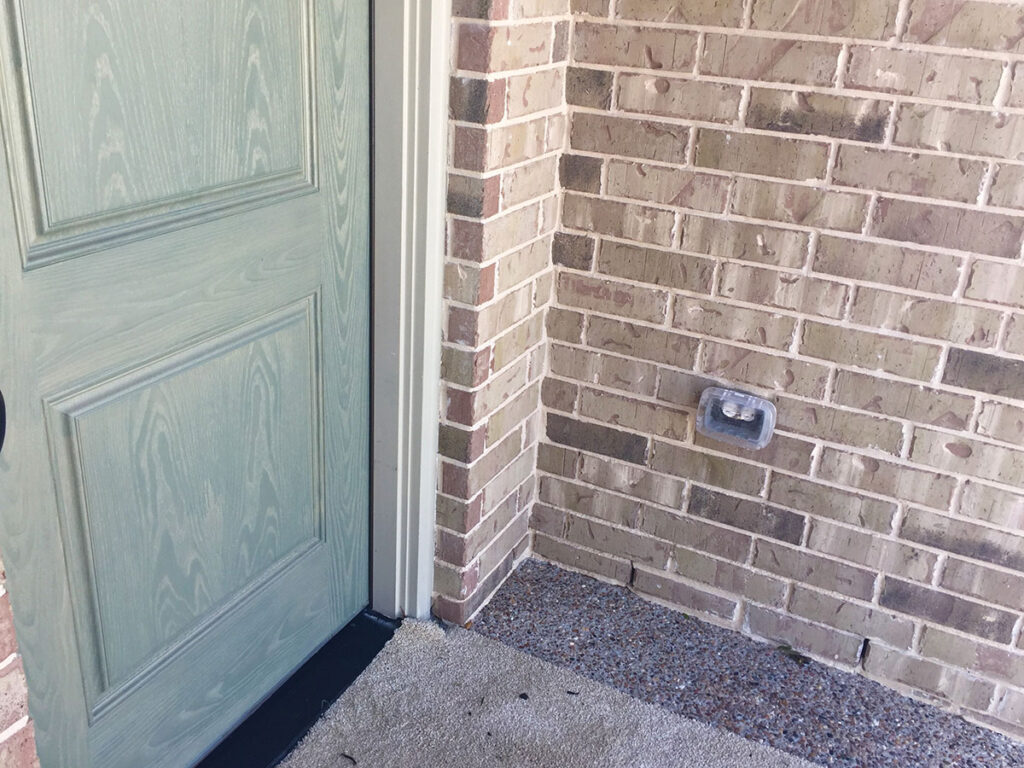
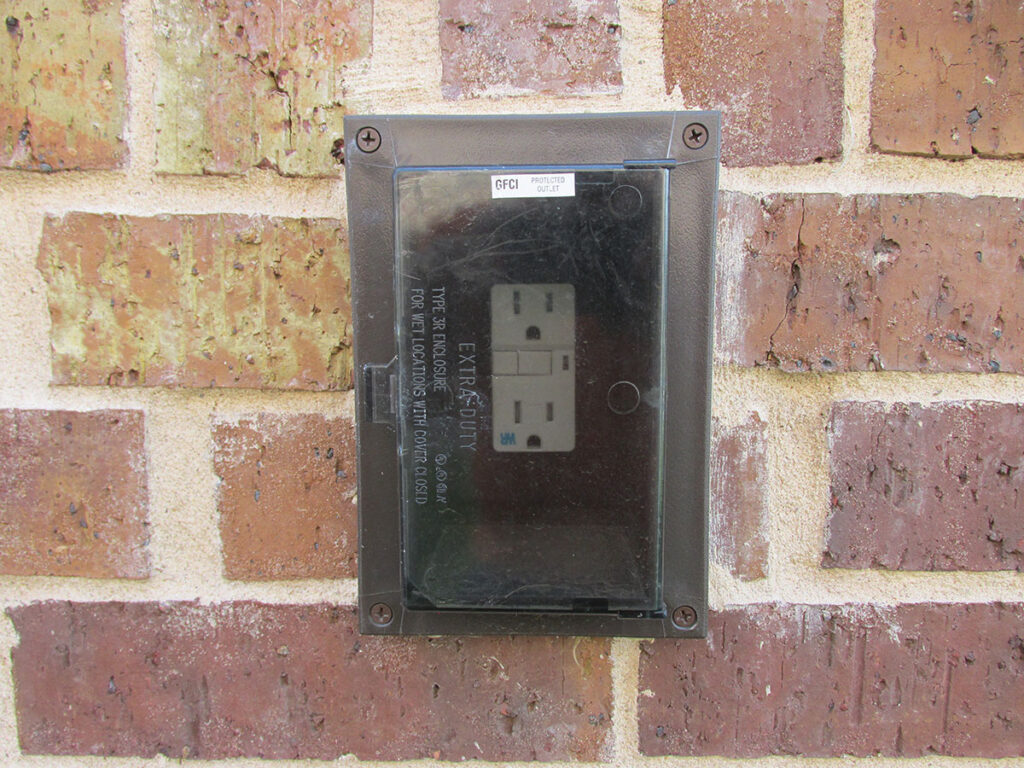
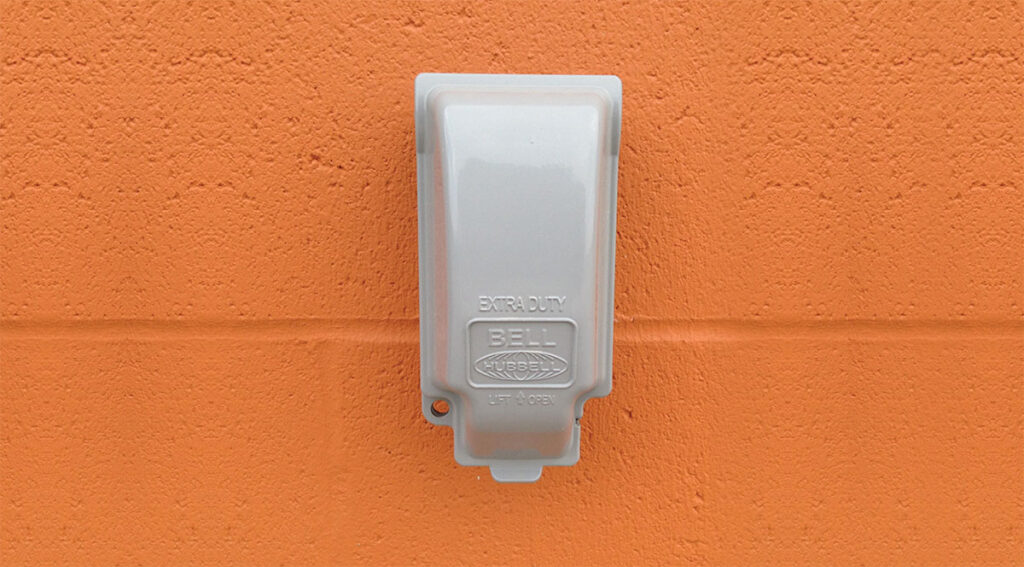
Another important bit of information involves the receptacle outlets located in damp and wet locations. How many installers have been asked to troubleshoot a receptacle that is no longer working? The receptacle happens to be located on the exterior of a building that is installed in a damp or wet location. Some reports have been received of yoke screws that could not be removed and would twist off and break. In other cases, the receptacle has come apart due to the rusting of internal components that were meant to keep the receptacle in one piece. This could be a scary situation in the event that the receptacle is still energized. The Code specifies at 406.9(A) and (B) that these 15- or 20- ampere, 125- and 250-volt nonlocking receptacles are required to be of a type that is listed weather-resistant (WR). This WR rating helps to ensure that the receptacle will last during the duration of time that it is installed in this damp or wet environment. Another concern with receptacles installed in these locations is exposure to the sun for prolonged periods of time. A non-WR rated receptacle is not protected from the UV rays of the sun and is subject to deterioration over a short period of time. See figures 3a and 3b.
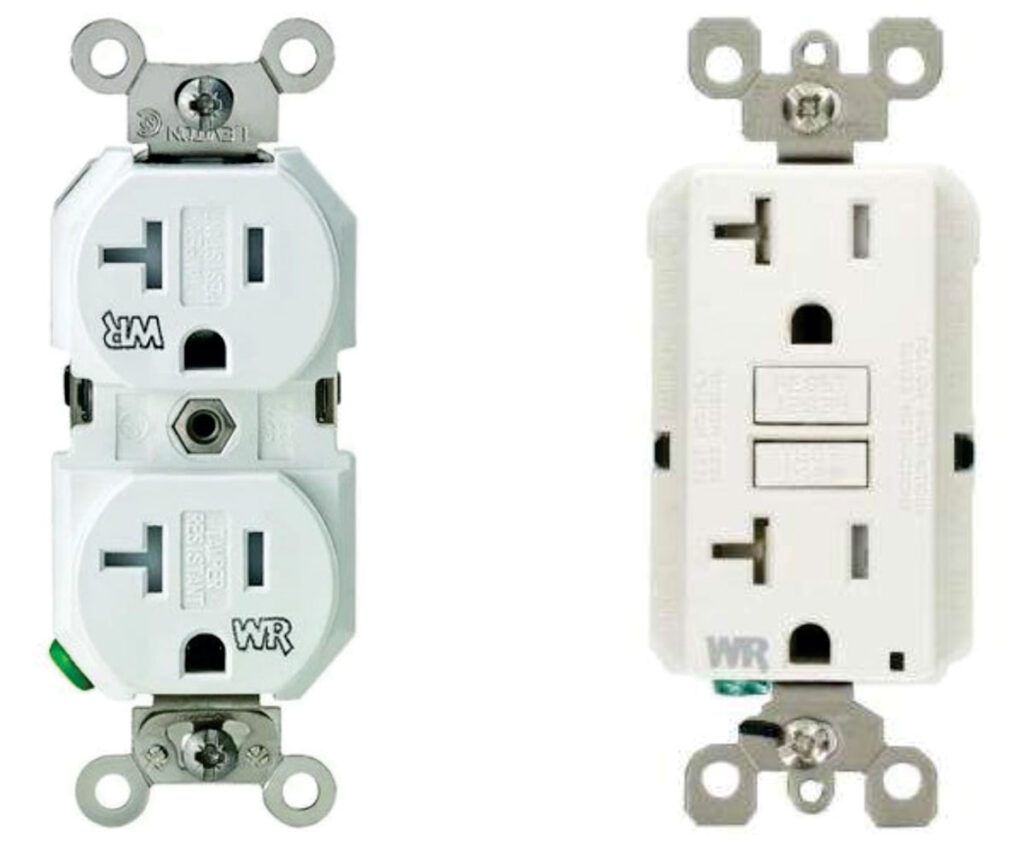
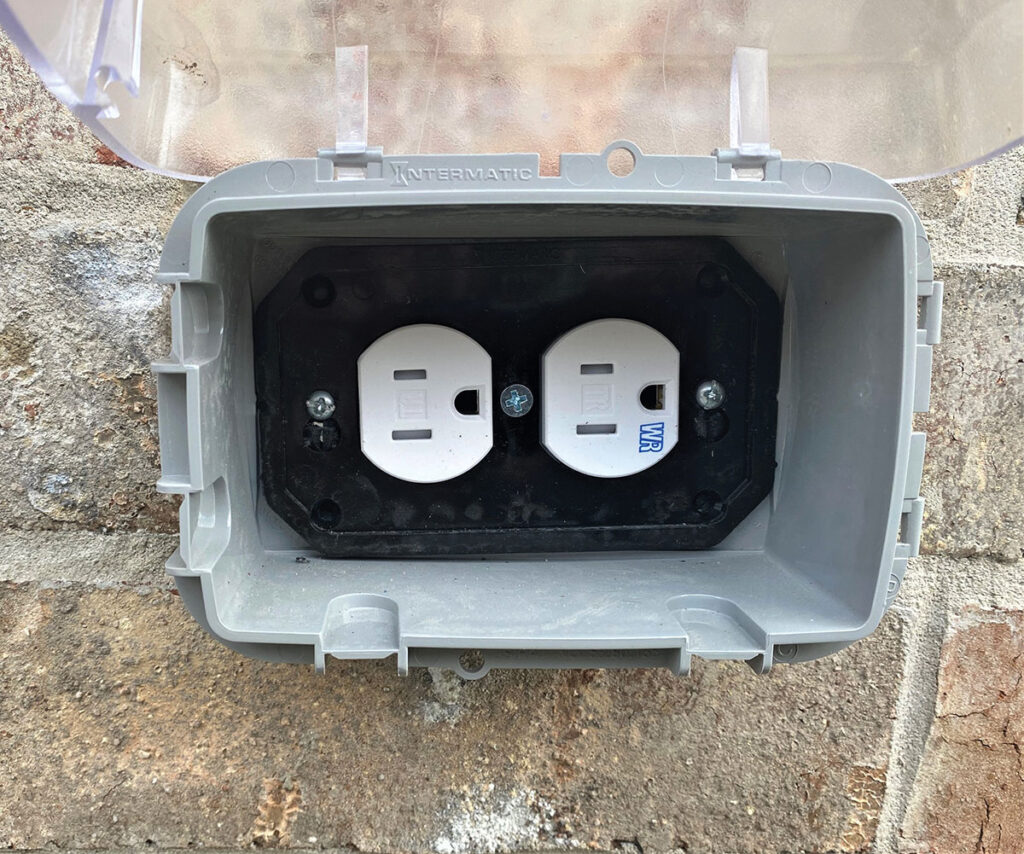
Other Important Information To Remember
The holiday season is a time of joy and reflection. Fun times with family and friends and an end to another year. Most folks are probably ready to see the year 2020 in their rear-view mirror. With all the excitement, it is important to be electrically safe. And being electrically safe does not happen by accident. Here are a few other items to keep in mind in order to celebrate a safe and prosperous holiday season.
- Protection of extension cords (physical)
- Cords should not be installed through doorways or through windows to provide electricity to outdoor installed holiday lighting or decorations
- Properly rated equipment for outdoor use
- Electrical equipment, holiday lighting, or decorations should be rated for use in wet or damp locations when installed outdoors
- GFCI protection of outdoor outlets
- 15- or 20- ampere, 125- and 250-volt nonlocking receptacle should be provided with Class A GFCI protection when installed for outdoor purposes
- Proper size of extension cords (light gauge vs. heavy gauge)
- Extension cords should have conductors large enough for the loads being served.Small conductor gauge cords (16 AWG and under) may not be able to deliver the electrical load to holiday lighting and decorations safely and could overheat, causing a fire.
- Time Constraints for holiday lighting
- Holiday lighting and decorations are permitted to be installed not to exceed 90 days from initial installation [see NEC 590.3(B)]. Yes, you need to take them down and not leave them installed from year to year.
- Conditions of holiday lighting and other decorations (frayed cords, broken lamps, unsafe conditions)
- Evaluate the condition of holiday lighting and decorations for excessive wear, damage conductor insulation, missing equipment grounding conductor prongs from cord caps, broken lamps, or other visible damage.Do not use these items if the damage is evident.
In the end, it is up to the installer of these holiday lights and decorations to install them in a safe manner. Sometimes the homeowner or hired lighting installer is well-intentioned and very safety conscious. A lack of understanding requirements found within the NEC or other safety documents can cause unintended safety problems.
Our hope here at IAEI is that you have a wonderful holiday season. If you are in doubt or in need of additional electrical branch circuits or receptacle outlets to operate these items, consult a licensed electrical contractor. A favorite seasonal movie of many has always been National Lampoons Christmas Vacation. There are a lot of Clark W. Griswold’s out there putting up holiday lighting every year with the goal of having the most glamorous or outrageous house on the block. Let’s all do our part in this process to make sure we keep all families electrically safe.





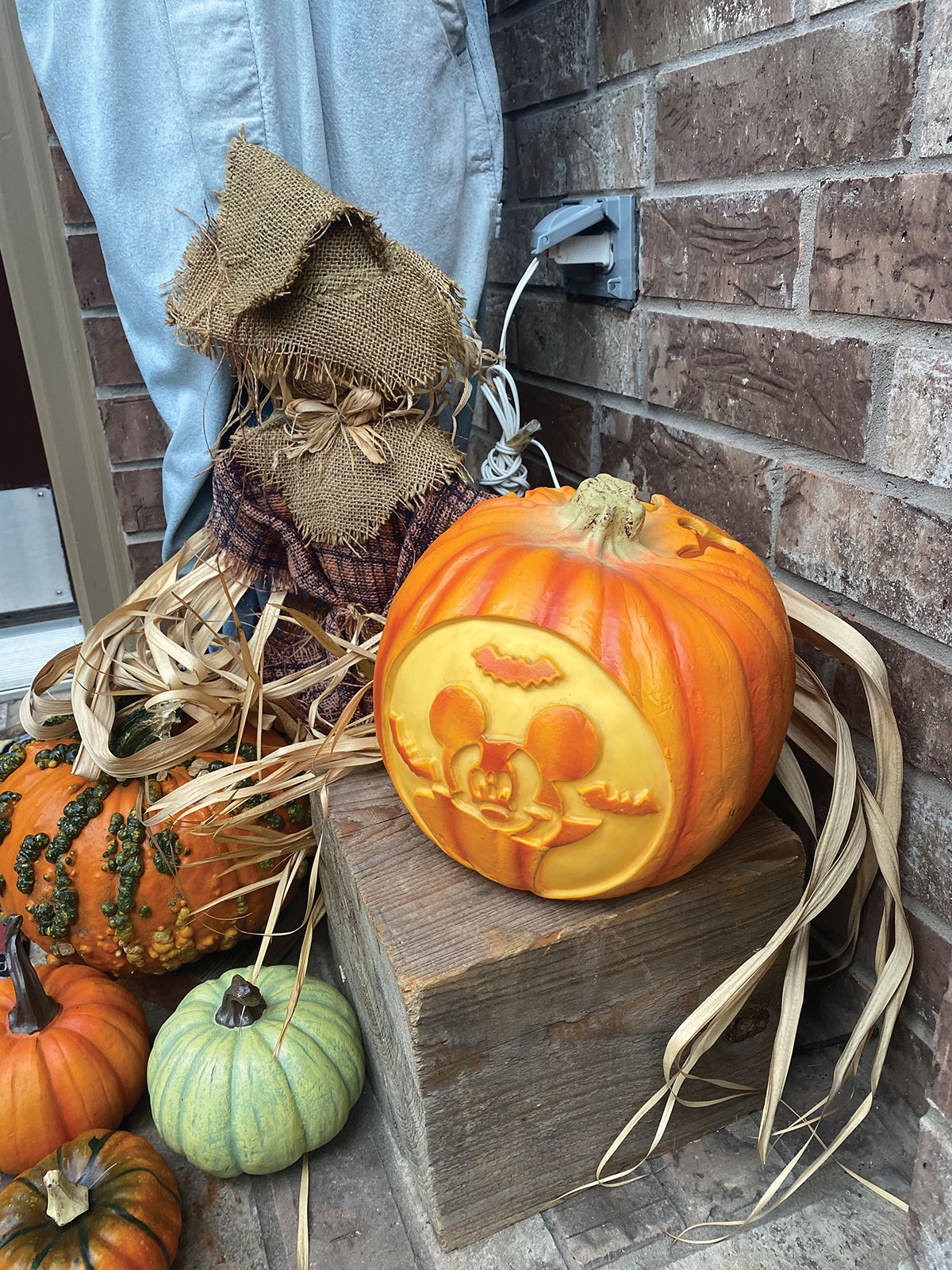






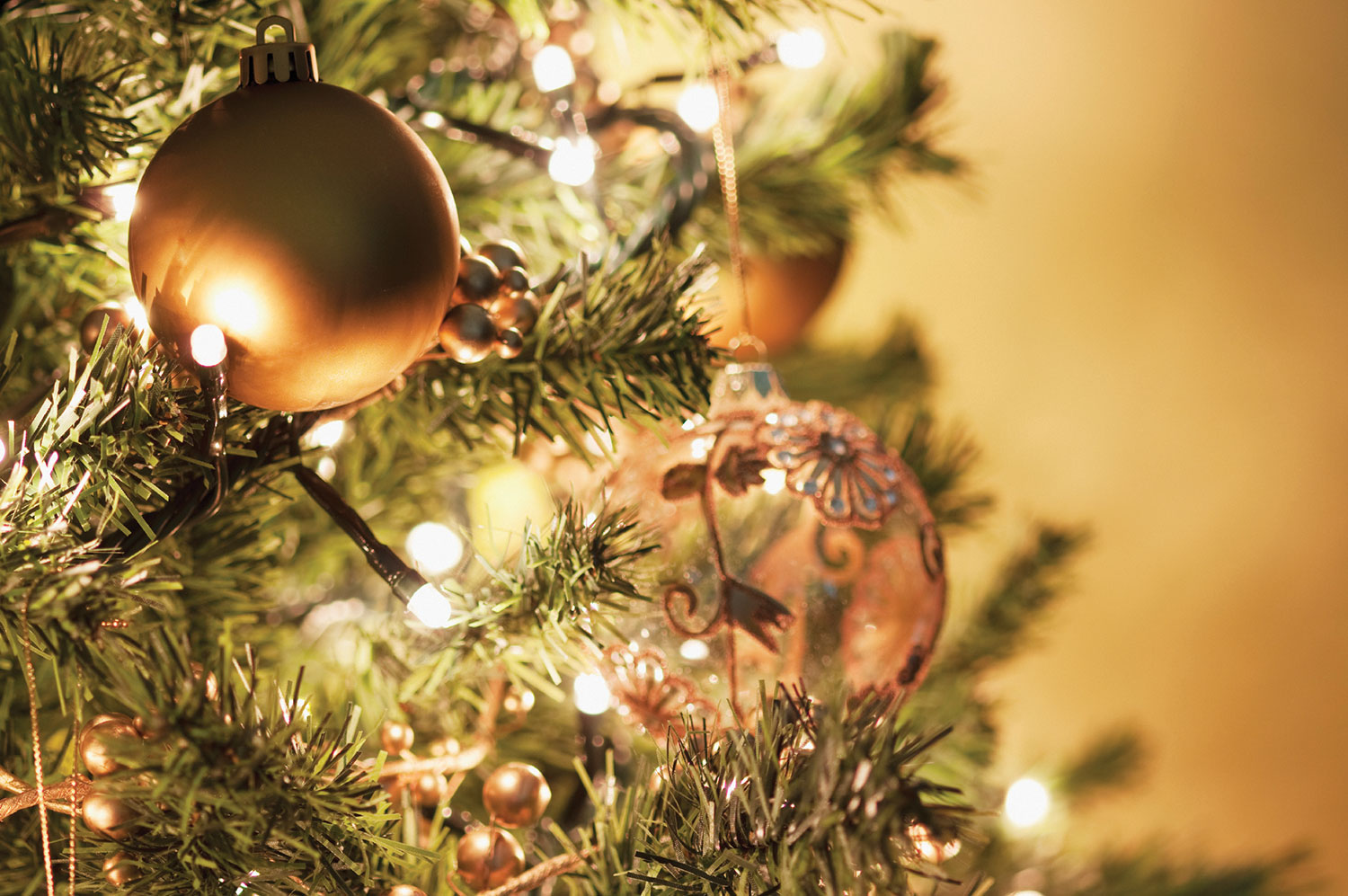
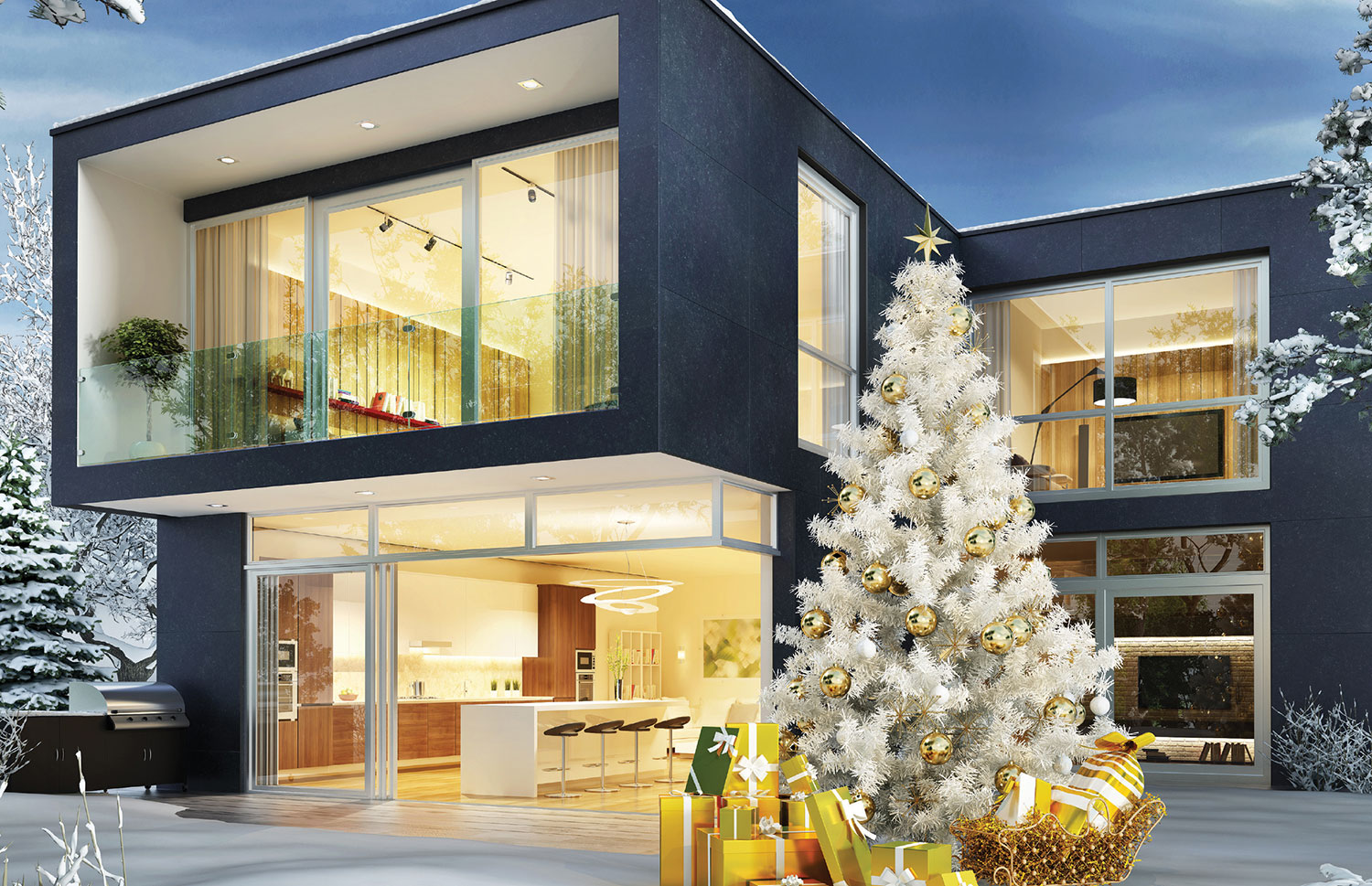
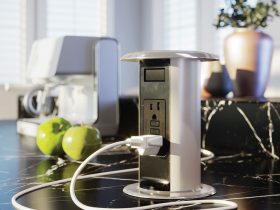
Find Us on Socials